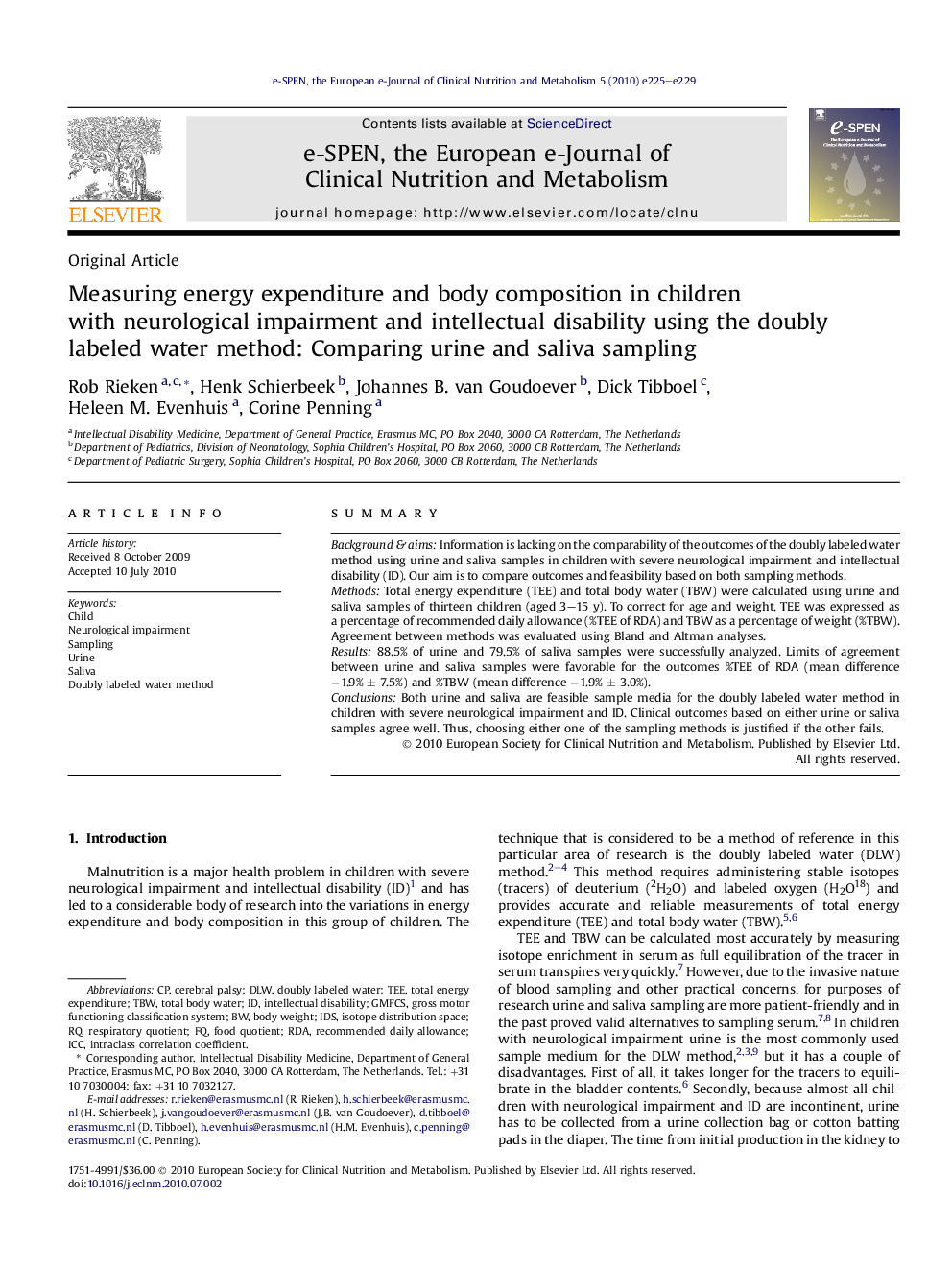| کد مقاله | کد نشریه | سال انتشار | مقاله انگلیسی | نسخه تمام متن |
|---|---|---|---|---|
| 2689535 | 1564758 | 2010 | 5 صفحه PDF | دانلود رایگان |

SummaryBackground & aimsInformation is lacking on the comparability of the outcomes of the doubly labeled water method using urine and saliva samples in children with severe neurological impairment and intellectual disability (ID). Our aim is to compare outcomes and feasibility based on both sampling methods.MethodsTotal energy expenditure (TEE) and total body water (TBW) were calculated using urine and saliva samples of thirteen children (aged 3–15 y). To correct for age and weight, TEE was expressed as a percentage of recommended daily allowance (%TEE of RDA) and TBW as a percentage of weight (%TBW). Agreement between methods was evaluated using Bland and Altman analyses.Results88.5% of urine and 79.5% of saliva samples were successfully analyzed. Limits of agreement between urine and saliva samples were favorable for the outcomes %TEE of RDA (mean difference −1.9% ± 7.5%) and %TBW (mean difference −1.9% ± 3.0%).ConclusionsBoth urine and saliva are feasible sample media for the doubly labeled water method in children with severe neurological impairment and ID. Clinical outcomes based on either urine or saliva samples agree well. Thus, choosing either one of the sampling methods is justified if the other fails.
Journal: e-SPEN, the European e-Journal of Clinical Nutrition and Metabolism - Volume 5, Issue 5, October 2010, Pages e225–e229